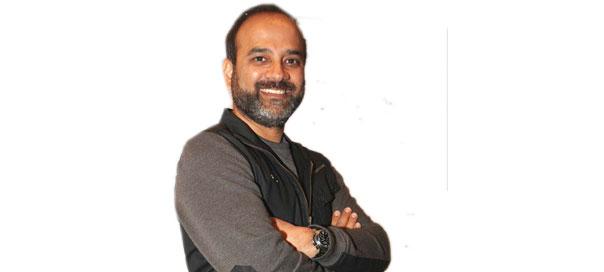By NEETA NAIR
India has a growing market for leisure riding, which is dominated by Royal Enfield in the mid-sized motorcycle segment of 250-750cc. With the brand’s latest offering, it is hoping to make a steady climb to the top even more easy, by launching what it calls India’s first purpose-built adventure tourer, the Himalayan. Rudratej Singh, President, Royal Enfield talks to us about the DNA of this bike.
“The Himalayan brings together the expertise we have and the experience of Enfield riders who have headed to the Himalayas for more than 60 years. It does equally well on-road and off-road due to its high ground suspension, mono shock absorbers at the back, extremely comfortable upright seating posture, low seat height meant for the average Indian rider. The Himalayan will get more people to ride and will make those who have ridden before do more,” Singh says. Traditionally, Royal Enfield is known not to invest in television commercials or radio spots, instead it relies on below the line activation and customer engagement, yet the numbers point at a 63% growth in sales of its motorcycles in 2015. Singh tells us why: “The definition of marketing for us is very limiting if you only look at television advertising. The world has moved on and certainly for a brand like Royal Enfield. We believe very strongly in market development, which is a fundamental pillar of marketing. We therefore invest a lot in giving experiential test rides, key to our experience philosophy. We make sure that we encourage fence-sitters to take their first ride.”
Talking about the interesting consumer engagement programmes launched by the brand, Singh says, “We organize many weekend rides and focus on building communities. We also have very big assets like ‘Ridermania’ and ‘Himalayan Odyssey’ which basically have the same objective of egging on more people to ride. These are big assets for us, and are brands in their own right because they attract so many people. June onwards, with our rides and communities teams, we will work on very unique rides for the Himalayas with Himalayan.”

One of the biggest hiccups that a Royal Enfield customer faces is the long waiting period for the Bullet, which sometimes stretches as much as six months. Talking about how the company plans to tackle the problem, Singh says, “Our capacities have increased over the last four-five years and we are absolutely committed to making our products available to customers as quickly as possible. It’s a good problem to have that while we continue to expand capacities; our bookings continue to outpace our capacity. To tackle that, we have just commissioned our third plant near Chennai, which will significantly step up our capacities over the next two-and-a-half years.”
The brand is fast expanding its global footprint, having set up bases in the UK, Europe, Latin America, Middle-East and now in South East Asia, with the ambition to be a leader in the mid-sized motorcycle segment of 250-750cc in the international market. Says Singh, “We are approaching this international thrust with what we call a city-led approach, i.e., we focus on creating an ecosystem at a city level. If we do market development first, business development will follow.” This strategy seems to have worked very well for the brand, which is now one of the world’s fastest growing motorcycle brands, even overtaking Harley Davidson when it comes to sales, the second year in a row. This is interesting because just 16 years ago, Royal Enfield had considered shutting shop due to dropping sales.
With the Himalayan, the brand wants to give Enfield riders a confident bike which can take on the dusty roads of the Himalayas. “A lot of people buy an Enfield saying, ‘I just want to book the motorcycle’. We want to encourage them to try the motorcycle first. While the features of the Himalayan call for a comfortable, confident, controlled riding for long distance, on and off terrain, it also fulfils the requirements of a day-to-day commuter. I live in Gurgaon and was earlier based in Mumbai, and I can tell you that there are enough riverbeds and potholes which you need to overcome on a day-to-day basis in these urban jungles as well. And thus we are very confident that the Himalayan will work equally well on city roads,” Singh concludes.























